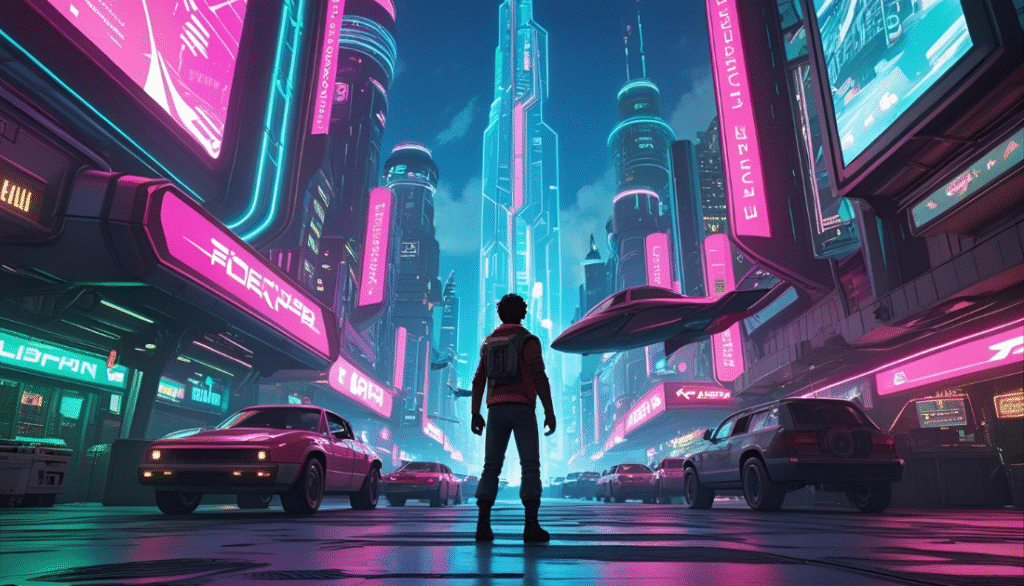Recent activity on X has sparked new speculation about Google’s ambitions in generative AI — specifically, whether its latest video-generation model, Veo 3, might eventually serve as the foundation for interactive, playable environments.
HIghlights
- Veo 3 Sparks Speculation: Comments from Google AI leadership hint at a possible future where Veo-generated videos could evolve into interactive, game-like experiences.
- Veo’s Current Role: While Veo 3 creates photorealistic, cinematic video with basic physics and sound, it’s still a passive generator—not interactive or responsive to player input.
- What World Models Offer: True “world models” simulate how environments react to user actions—a key requirement for building interactive games or simulations.
- Google’s Interactive Stack: Projects like Genie 2 (2D game generation), Gemini 2.5 Pro (multimodal reasoning), and DeepMind’s world modeling division point toward a longer-term convergence of video, logic, and interactivity.
- Competitive Landscape: Google is competing with Microsoft, OpenAI (Sora), Pika, Runway, and Fei-Fei Li’s World Labs—each exploring interactive AI-driven visual content in different ways.
- Technical Barriers Remain: Turning Veo 3 into a game engine requires major advances in real-time responsiveness, consistent physics, player feedback loops, and memory systems.
- Hybrid Workflow Vision: A near-future model could combine Veo for cutscenes, Genie for level design, and Gemini for AI-powered NPCs—creating a modular game development pipeline powered entirely by generative AI.
The conversation began when a user on X casually posted: “Let me play a video game of my Veo 3 videos already. Playable world models when?” In response, DeepMind CEO Demis Hassabis offered a cryptic but intriguing reply: “Now wouldn’t that be something.”
Soon after, Logan Kilpatrick, Head of Product for Google AI Studio and Gemini API, added to the mystery with a string of “🤐” emojis.
Though no official announcement followed, the vague responses were enough to stir interest among AI and gaming communities — particularly as they align with the trends in Google’s AI strategy.
Veo 3 vs. True World Models
Veo 3 is a high-end generative video model capable of producing photorealistic video with synchronized audio, including voice and ambient sounds.
It also incorporates basic physics for more natural motion. However, it remains a passive media generator—it cannot respond to real-time inputs or enable interactivity.
In contrast, world models are active systems that simulate how environments change based on user actions.
These are essential in domains like robotics, decision-making, and gaming. For Veo 3 to become part of a playable experience, it would need to evolve from rendering scenes to simulating dynamic, responsive environments.
Google’s Growing Toolkit
While Veo 3 isn’t currently interactive, Google has already taken foundational steps toward building playable world models:
- In December 2024, DeepMind introduced Genie 2, a model capable of generating diverse, 2D playable game environments from simple prompts.
- In early 2025, it was revealed that Google had formed a dedicated team focused on world modeling, aiming to simulate real-world dynamics using AI.
- Gemini 2.5 Pro, a multimodal foundation model designed to reason across modalities, is also positioned to complement this stack with cognitive and interactive capabilities.
This ecosystem suggests a path toward convergence: combining Veo’s cinematic video quality, Genie’s interactive 2D environments, and Gemini’s dialogue or simulation capabilities could, in theory, produce a new class of playable experiences powered entirely by AI.
Competition Heats Up
Google is not alone in exploring the boundaries of generative interactivity.
- World Labs, a startup led by AI pioneer Fei-Fei Li, is developing 3D environments from single images.
- Microsoft, OpenAI (with Sora), Runway, Pika, and Scenario are also investing heavily in video-generation tools with potential gaming applications.
Among them, Google may hold a unique advantage in its deep AI stack and multimodal integration, positioning it to blend realism and interactivity at scale.
Limitations and Technical Barriers
Despite the excitement, bridging the gap from video generation to interactive simulation poses significant challenges:
- Real-time responsiveness
- Consistent world logic and physics
- Player feedback loops and agency
Veo 3 currently excels at generating cinematic content—ideal for cutscenes, previews, and storytelling assets. Turning that into playable content would require advancements in AI reasoning, memory, and logic systems.
A Hybrid Future?
While a full-fledged AI-powered game engine may still be years away, a hybrid workflow is within reach. Imagine:
- Veo generates cutscenes or trailers
- Genie builds explorable levels
- Gemini powers NPC dialogue and decision-making
Such a pipeline would dramatically lower the barrier for game development, allowing both designers and players to generate immersive content on demand.


